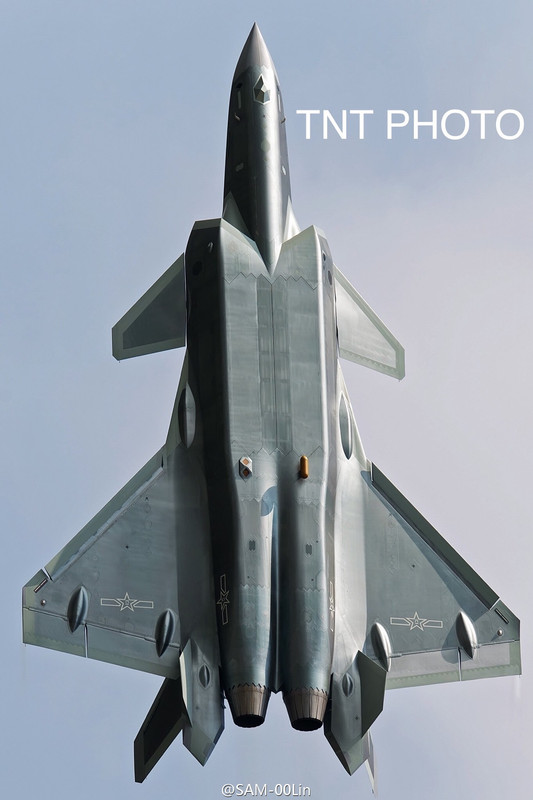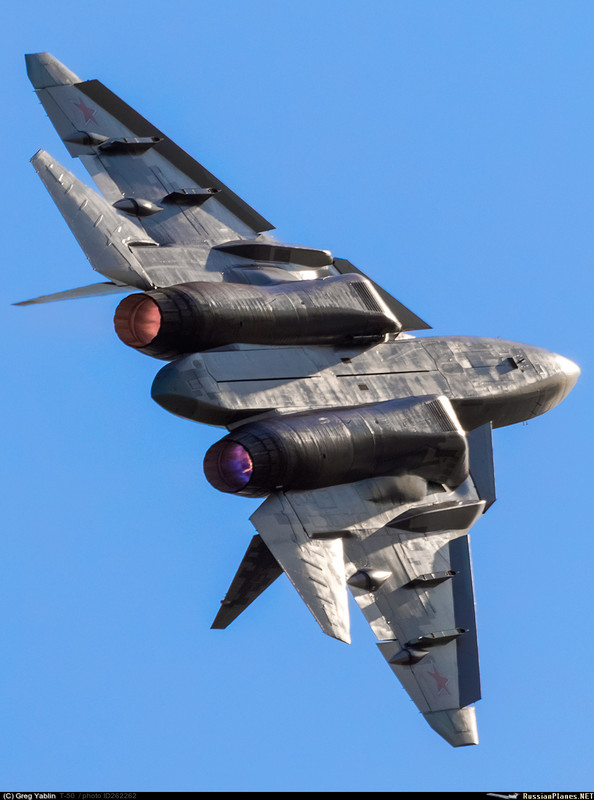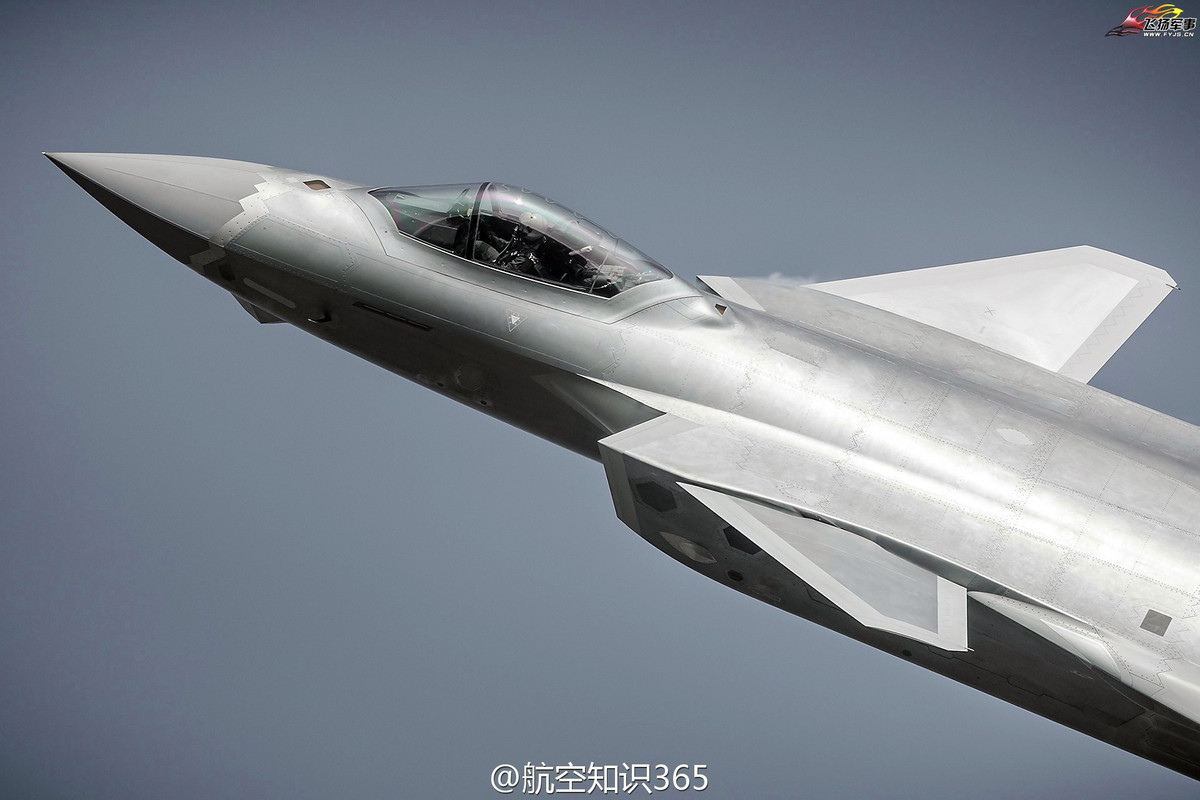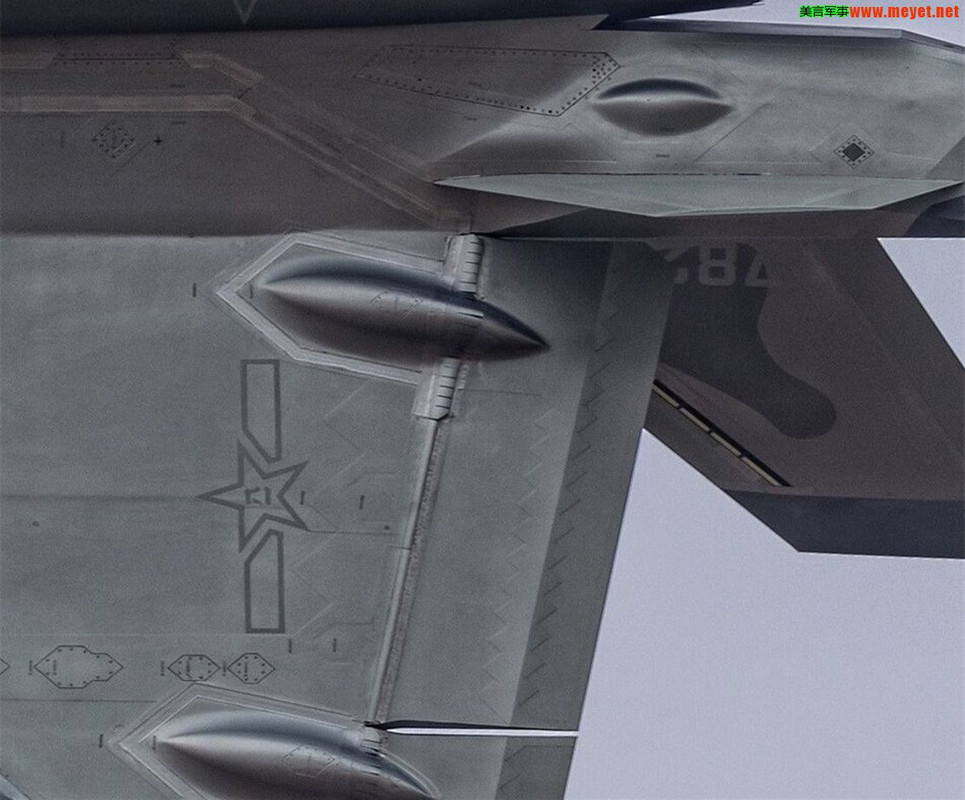That (Su-57 vs. J-31) is not a comparison I was attempting to make with that statement, for all the reasons you mention that would be facile. It was merely to point out with respect to the WZ-8 that matt black paint makes it difficult in the extreme to judge such things, to the point where even far more obvious surface details like weapons bay doors can vanish completely. For years after the first flight of the Su-47 in 1997 there was a legitimate debate about whether it had bays or not due to the absence of clear photos, this was not settled until it appeared in public at MAKS 4 years later. Even then, because it only participated in the flying display and thus the number of high-quality pictures remained very limited, you often had to still argue the point for several more years.
As for J-20 vs. Su-57, it's difficult to make a good comparison as we've neither seen very many close-ups of Su-57s with full coatings (which only the last 3 prototypes have) nor any photos whatsoever of truly "naked" J-20s. All primer photos of the latter already include a significant amount of RAM treatments and the anti-corrosion paint is no longer differentiated by surface material (indicating it's not the bottom-most layer, as is the case with primer Su-57s). J-20 prototypes #2001 and 2002 might make a decent point of comparison, but then we run back into the matt black paint problem (and like the early Su-57s and J-31 v1.0 they are not necessarily representative of the finished article). All I can say is that close-ups of unpainted Su-57s indicate a very high surface quality that compares well with photos of F-35 subassemblies under construction, and that goes even for the very first prototype (see below).
That's a pretty gross apples and oranges comparison. For starters, it's a production J-20 with full coatings versus an early prototype Su-57 (indicated by the external band-aid reinforcements on the horizontal stabilizers and the strain gauges bonded to the wing) wearing only normal top coat. Further the lighting conditions in the Su-57 photo are extremely unflattering, far more so than in the J-20 image: look at the length of the shadows cast, especially by the LE flaps over the wing! On the J-20 they reach barely 1/3 of the chord near the tip, while they completely blanket the entire thing (and then some) on the Su-57. So any surface irregularities are amplified correspondingly more strongly on the Su-57 picture (in fact, most of what we see is probably variations in reflectivity due to paint distribution or stains, rather than actual dents or bumps).
View attachment 59134
View attachment 59135
View attachment 59136
View attachment 59138
 Following pictures shows the "finish quality" of J-20 vs Su-57. J-20 pays more attention to stealth then Su-57 does hence surface finish+ram coating creates a much finer looking plane.
Following pictures shows the "finish quality" of J-20 vs Su-57. J-20 pays more attention to stealth then Su-57 does hence surface finish+ram coating creates a much finer looking plane.

 May be a CRKJ-939 is possible, lol..
May be a CRKJ-939 is possible, lol..








